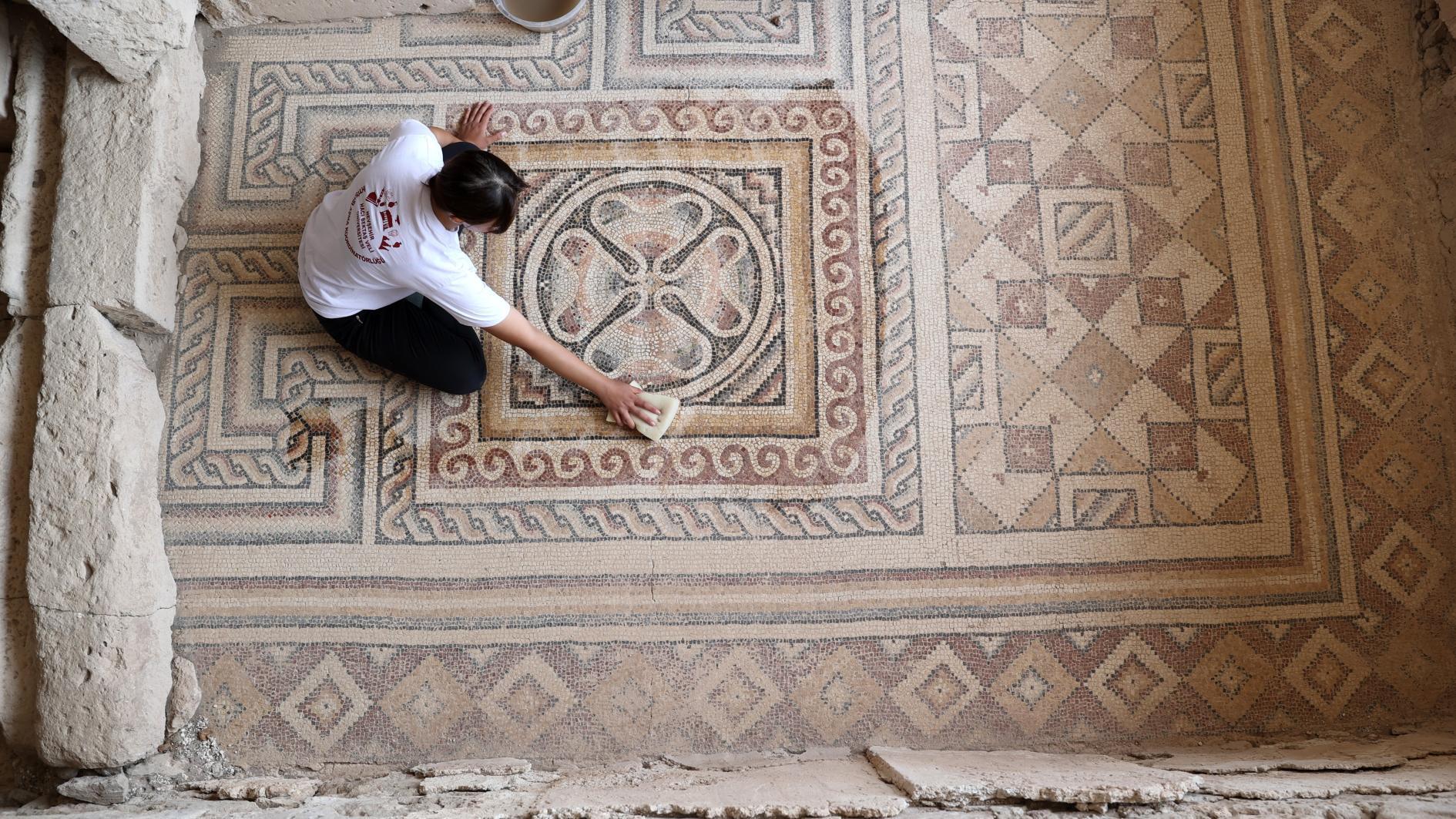
Excavations at the ancient city of Sobesos, located in the Şahinefendi village of Nevşehir’s Ürgüp district, are providing new insights into the urban development of the Cappadocia region.
Since the site’s discovery in 2002, archaeologists have unearthed a variety of structures dating back to the fourth century Roman era, including mosaic-adorned buildings, a bath complex, meeting halls, rock-cut tombs, tandoor ovens and domestic dwellings.
Associate Professor Bilsen Özdemir, head of the excavation team and a faculty member at the Department of Archaeology at Nevşehir Hacı Bektaş Veli University, said the ancient city holds the potential to make a significant contribution to both the historical scholarship and tourism of the region.
“Sobesos offers a very different glimpse into Cappadocia,” Özdemir told state-run Anadolu Agency. “Once the site is fully opened to tourism, visitors will be able to witness an aspect of the region they’re not accustomed to seeing.”
Özdemir emphasized that the excavations are being conducted with meticulous care, with all uncovered fragments catalogued and preserved. She added that the work is expected to take many more years due to the site’s complexity and importance.
“When we look at the site as a whole, it’s clear that it sheds light on the broader historical narrative of Nevşehir and Cappadocia,” she said. “What makes Sobesos particularly distinctive within the Cappadocian context is the nature of its settlement. In most of the region, we see residential and religious architecture, particularly churches, carved into the soft volcanic rock. But Sobesos reveals a rare form of urbanization not commonly encountered elsewhere in Cappadocia.”
Özdemir noted that, while other notable ancient cities such as Tyana in Niğde and Mokissos in Aksaray also display elements of rural urbanization, Sobesos is unique in its layout and construction, offering perhaps the only such example in the Nevşehir region.
Surface surveys and excavation work have also revealed traces of much older settlement layers, including Neolithic and Bronze Age materials. “We hope future excavations will provide evidence of even earlier human habitation predating the Roman period,” she said.
The scope of the site may also prove larger than initially thought. “As research continues, our understanding of Sobesos is evolving,” Özdemir explained. “We believe we’re not just dealing with a single Roman-era city, but rather a layered archaeological zone with occupation stretching across multiple time periods and locations. It’s possible that in the coming years, we will uncover a settlement much larger than what we currently see.”
Ürgüp Museum Deputy Director Mehmet Öncü said the villa section, believed to have belonged to a Roman aristocrat and featuring some of the site’s most intricate mosaic floors — is open to the public free of charge.
However, Öncü noted that despite its archaeological richness, the site still suffers from low visibility and receives only about 15,000 visitors per year.
Surface research in the surrounding villages has also yielded ceramic fragments, further fueling the excitement among researchers about the broader potential of the site.